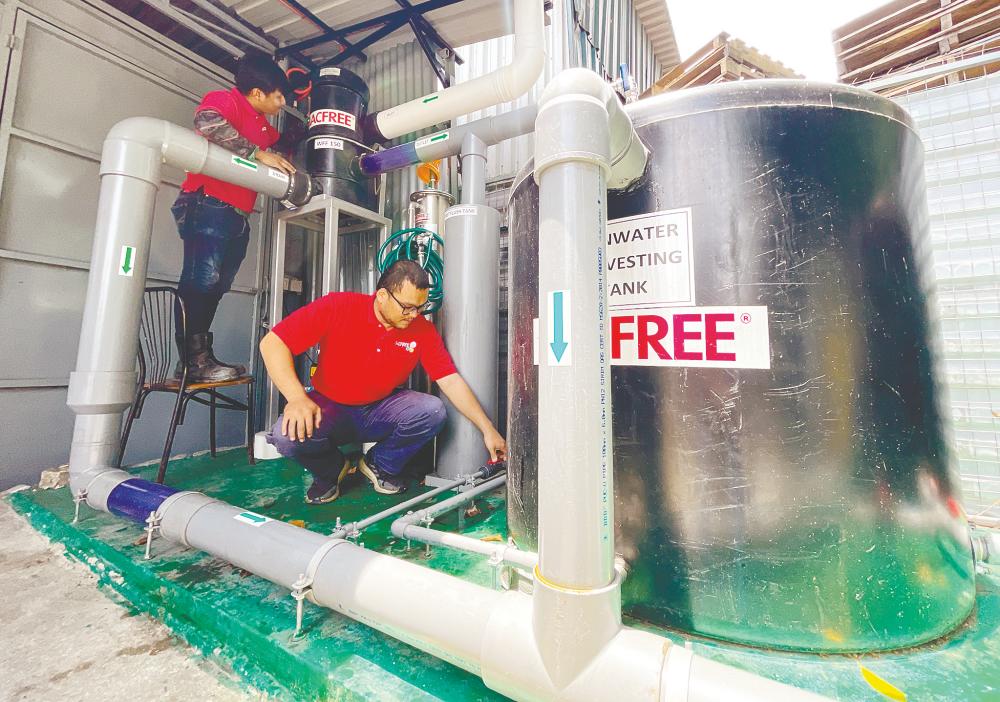PETALING JAYA: With numerous water disruptions in Selangor and the country, the public has been urged to instal rainwater harvesting systems at home as rainwater is easier to treat, store and use.
Bacfree technical director Dr Chee Chung Yee said the measure would help reduce carbon emissions compared with using municipal water.
Bacfree is headquartered in Subang Jaya and pioneered the use of water filters and introduced rainwater harvesting systems in Malaysia in 2009.
“Rainwater harvesting systems could reduce residential and commercial property reliance on municipal treated water and take pressure off water companies, such as Air Selangor.
“It also allows more equitable access to water resources, helps tackle increased demand from existing consumers and supports the needs of residents in new housing developments.”
He said rainwater harvesting acts as a backup water source, especially during water supply disruptions, and reduces municipal water consumption.
To support the government initiative to promote the growth of the green economy, the Green Technology Tax Incentive was established in 2014.
“From Jan 1, 2024 to Dec 31, 2026, companies can use 60% of their investment tax allowance to offset 70% of their taxable income from eligible expenses.
“This is subject to installing a rainwater harvesting system certified by the Malaysian Green Technology and Climate Change Corporation and that has the MyHIJAU mark and Sirim Ecolabel.”
He said the rainwater harvesting system installation cost is between RM1,500 and RM5,000 for a house, depending on the type of rainwater filter, tank and capacity, municipal water top-up device, and optional water pump for distribution.
He also said harvested rainwater is usually used for non-potable purposes, such as garden irrigation, general cleaning, car washing, toilet flushing, laundry and swimming pools.
“The installation may be a challenge in some houses due to design constraints. Although it is reasonably priced, the cost could be an issue for lower income families.
“It would be beneficial if the government offered grants or tax incentives for existing properties to encourage the installations.”
Chee said the bountiful supply of rainwater that is distributed relatively evenly over a year when compared with countries with distinct wet and dry seasons ensures that rainwater harvesting systems would provide water throughout the year.
“Malaysia has around 200 rainy days per year, with most places receiving an annual rainfall of more than 2,000mm. Some areas receive rainfall that exceeds 4,000mm.
“However, there is a lack of awareness about the ease of installing rainwater harvesting systems and its benefits.”
He suggested educating students and industry players by including information about the system and its benefits in the science syllabus or professional training.
He said the poor momentum in implementing such systems is partly due to a lack of a champion in the form of a government department or statutory body to promote its implementation.
“Every cubic metre of rainwater that is used as an alternative to municipal water could reduce carbon dioxide emmission equivalent to 0.56kg.
“Larger industrial rainwater harvesting systems could reduce the amount equivalent to planting a few thousand trees a year.
“Rainwater harvesting is the natural evolution in our relationship with water and nature. It is the easiest and most affordable environmentally friendly initiative anyone can take. It should be widely promoted for public benefit.”









